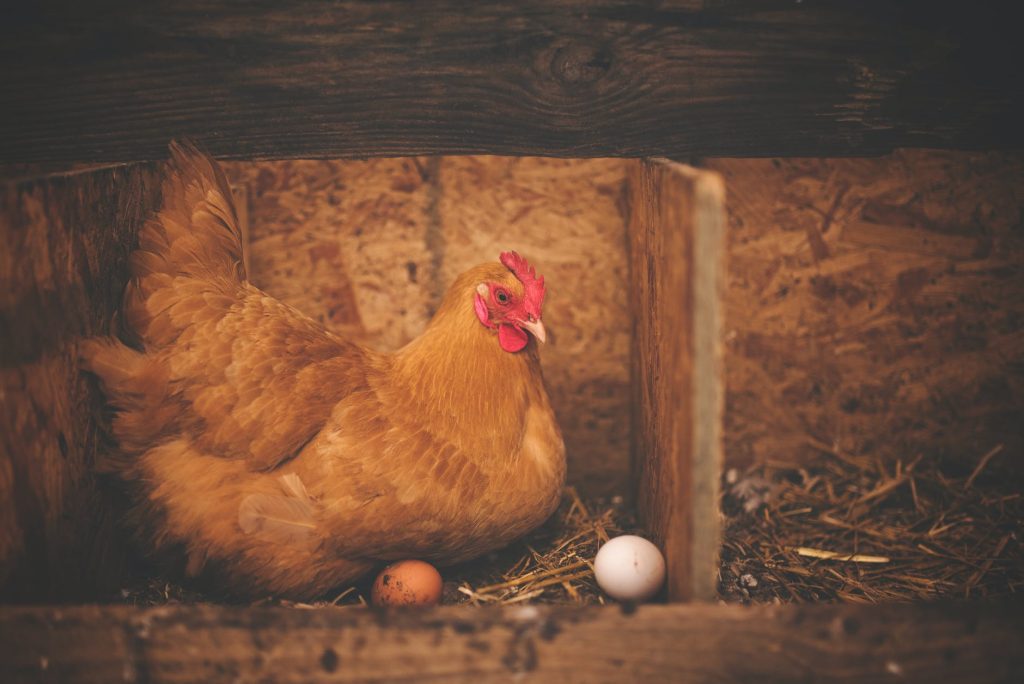Hi, welcome to this hall on, incubation and Hatching process in poultry farming.
Table Of Contents
- What is incubation?
- Types of incubation
- Incubation and hatching process
- Advantages of artificial incubation
- What is hatching
- Importance of incubation
- Revision Questions.
WHAT IS INCUBATION
Definition: Incubation in poultry Farming refers to the artificial process of providing controlled conditions to fertilized eggs for embryonic development. This typically involves maintaining specific temperature, humidity, and ventilation levels to mimic a hen’s natural nesting environment.
It can also be define as the process of providing fertilized egg with optimum condition of temperature, relative humidity and ventilation necessary for development of chicks and their successful Hatcher.
Types Of Incubation And Hatching Process
Natural Incubation: The natural incubation is a types of incubation done by the hen itself, after having a number of eggs. Natural incubation in poultry farming occurs when a broody hen, which is a female bird that exhibits a strong desire to hatch eggs, sits on and cares for her eggs until they hatch. The broody hen maintains the necessary warmth and humidity by sitting on the eggs and turning them regularly. This process typically takes around 21 days for chicken eggs.

During natural incubation, the hen instinctively creates a suitable microenvironment to nurture the developing embryos. This method is closer to the natural breeding process but is dependent on the broody behavior of the hen, which may vary among individual birds. Natural incubation is commonly observed in backyard or traditional farming setups where hens are allowed
Artificial Incubation: Artificial incubation in poultry farming involves using mechanical devices known as egg incubators to simulate the conditions necessary for the development of fertilized eggs into chicks. Key factors controlled during artificial incubation include temperature, humidity, and ventilation.
Advantages of Artificial Incubation:
- Hen does not have to stop egg production, consequently, a large number of eggs are produced within a short.
- Large number of egg are incubated and hatch at the same time. Incubators of over 100,000 egg capacity are even available
WHAT IS HATCHING:
Definition: Hatching in poultry farming is the process by which fertilized eggs develop into chicks. This occurs after a period of incubation, whether it’s through natural means with a broody hen or through artificial incubation using mechanical devices.
Collection And Storage Of hatched Eggs
collection: Hatched eggs are supposed to be collected at least 3 to 4 times a day. Under our tropical environment it is good to collect more often than this. This will help to prove to reduce deterioration and consequently reduced hatching potentials.
Storage: The body temperature of hen is between 41 to 42°C. At the time the egg is dropped, it is at that body temperature and the embryonic development still continues. Consequently, egg are stored in egg holding room for period ranging from one days to two weeks.
Storage conditions include a temperature of about 18°C and a relative humidity of 75 to 80%. Eggs are stored with the large end facing upward while turning of the eggs may not be necessary within the first two weeks but above two weeks. Turning is advisable to prevent contact of embryos with shell membrane, which may cause the hydration or physical damage.
INCUBATION AND HATCHING PROCEDURES
During incubation, eggs are kept in a controlled environment, typically an incubator. The key steps in the incubation and hatching process are:
- Selection of Eggs: Choose healthy, fertile eggs for incubation.
- Setting Up Incubator: Maintain the incubator at the appropriate temperature and humidity levels. Different species have specific requirements.
- Egg Rotation hatching process: Regularly turn the eggs to prevent the embryo from sticking to the shell membrane.
- Candling hatching process: Shine a light through the egg to check embryo development and remove any non-viable eggs.
- Final Days of Incubation: Stop turning the eggs a few days before expected hatch date. Increase humidity to assist with hatching.
- Hatching process: The chick internally pips (breaks through the air cell) and externally pips (breaks through the shell). The chick then pushes its way out of the egg using its egg tooth.
- Drying Period: Allow the newly hatched chick to dry completely before moving it to a brooder.
- Prior to setting eggs in the incubator the eggs should be brought out from cold room and left to attain room temperature in order to eliminate sweating.
- The incubator which must have been cleaned and disinfected is started early enough to attend optimum temperature and relative humidity before eggs are placed in it.
- The eggs are arranged in egg setting trays and place in the incubator. It is good practice to fumigate the eggs before setting.
Importance Of Incubation
Incubation is important for various reasons which we are going to look into. Below are the importance of incubation:
1. Embryonic Development: Incubation provides a controlled environment for the proper development of embryos. This is crucial for the formation of viable and healthy offspring.
2. Temperature Regulation: Maintaining optimal temperature ensures enzymatic processes within the embryo occur at the correct rates, supporting normal growth.
3. Humidity Control: Adequate humidity is necessary for preventing the egg contents from drying out, facilitating gas exchange, and preventing deformities in the developing embryo
4. Turning Eggs: Regular turning prevents the embryo from sticking to the shell, ensuring proper development of organs and muscles.
5. Candling for Monitoring: Candling eggs during incubation allows for the identification of non-viable eggs, reducing the risk of unhealthy chicks hatching.
6. Optimizing Hatch Rates: Controlled incubation conditions increase the likelihood of a higher hatch rate, contributing to the success of breeding programs.
7. Conservation Efforts: Incubation is crucial in conservation efforts, helping to increase populations of endangered species in controlled environments.
In Summary: Proper monitoring and adherence to environmental conditions are important for a successful incubation and hatching process. incubation is a fundamental process in animal reproduction that ensures the survival and health of offspring.
Revision Questions
- What is the meaning of incubation?
- Briefly state and explain two main types of incubation.
- Outline 5 incubation and hatching process stated above.
- (a) Discuss four importance of incubation (b) State four advantages of artificial incubation.
